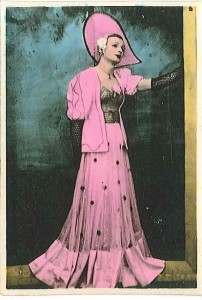
Don ‘Pinky’ Smith at Stalag 383. Female impersonators in POW camps can tell us about how conceptions of masculinity transgressed in captivity.
I think it is practically impossible to write a history of war without some consideration of gender, because war is constructed through gender and gender is constructed through war. Many societies, past and present, have developed concepts of masculinity that induce and motivate men to fight. Equally, manhood has been, and often still is, linked to performance in battle.
Masculinity, like other forms of power and identity, is often best studied where and when it is most under question. Therefore, I used the all-male environment that men often found themselves in, during First World War, to study their sexuality. Specifically, I looked at their visits to brothels whilst stationed abroad. In the Second World War, the context of the prisoner of war camp, and all its potentially emasculating conditions, enabled me to study the masculinity of British servicemen.
Please see my speaking engagements and publications for my findings on men at war.
